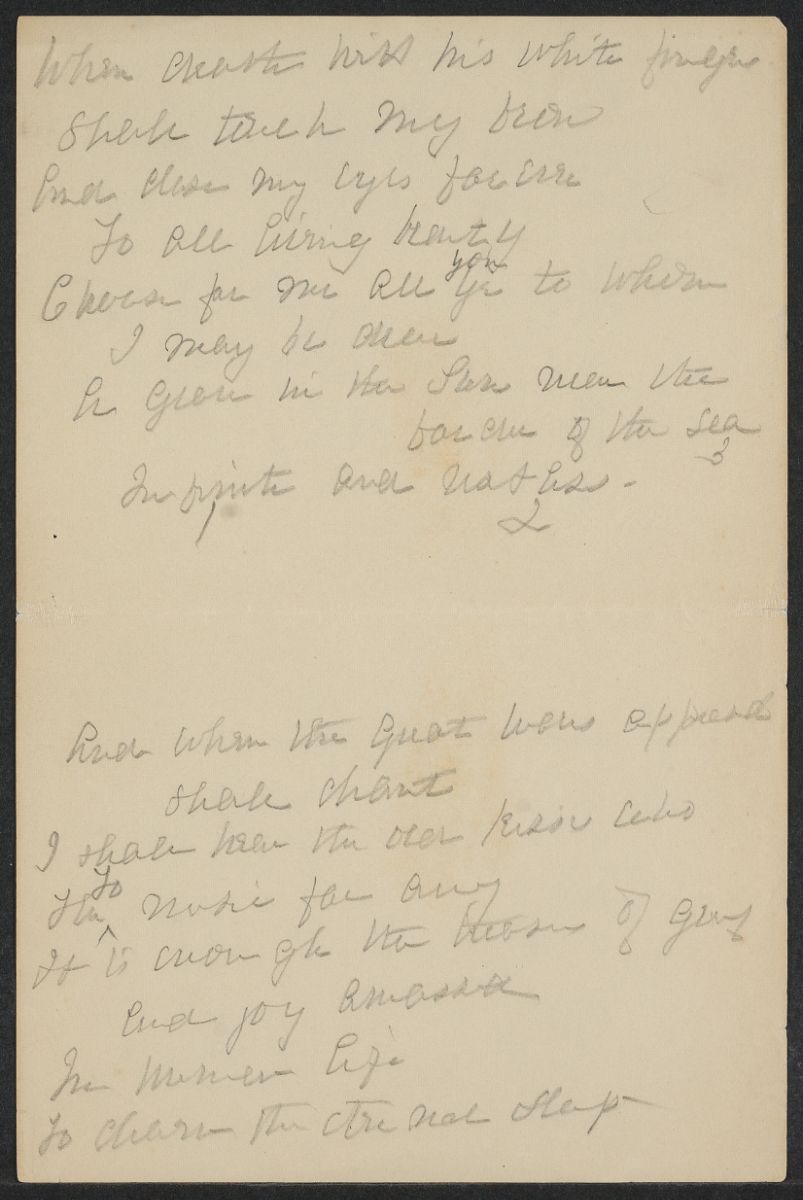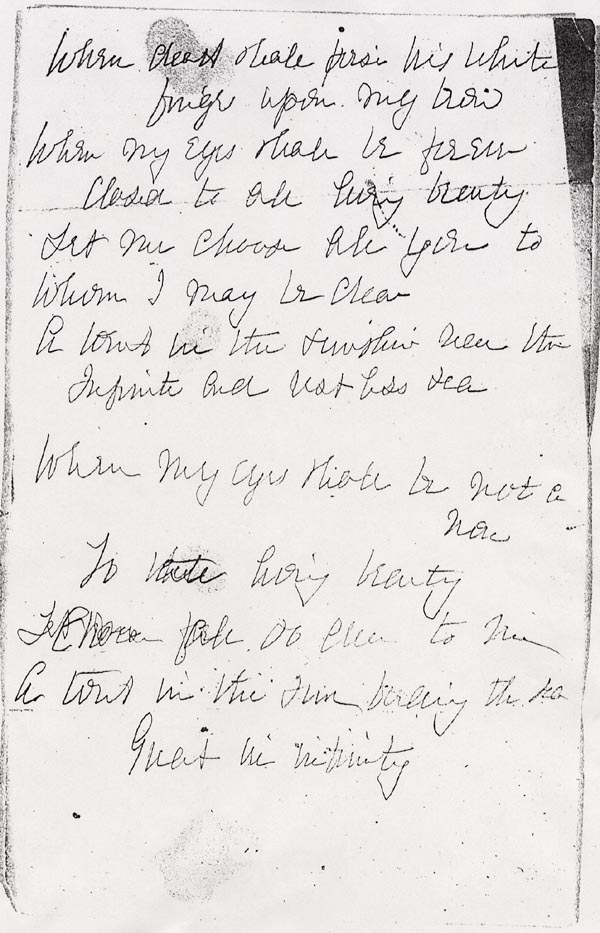<< Return to Poems
When death with his white fingers
< transcription 1, transcription 2 >
H bMS Am 1118.95, Box 9
Late 1890's? Similar to handwriting of 90’s letters to William Hayes Ward. Pencil, first stanza or poem is on top half and second is on bottom half of sheet folded in half.
Appears to be self-authored elegy, "last testament" or in the manner of such and may be a companion poem to "The days when the smiles..." on verso.
One of a couple poems which uses the first person, very unusual for the nineteenth century, as it is considered a less formal, more confessional or epistolary mode; see "Did I but purpose to embark with thee", "Of June and her belongings", "I’m waiting but she comes not back", "What offering can I bring...". Not coincidentally, all of Susan’s first person poems are in manuscript, (with the exception of "What can I bring..." where first person is a convention of the devotional genre), prepared as if to send or addressed to a specific audience. This poem, addressed to the speaker’s close friends and family, borrows the immediacy of the epistolary, and its familiar prosaic style.
A couple readings of the poem’s formal intentions could be argued, the latter of which seems most plausible. Due to holes in the transcription, though, the logic of the second stanza is difficult to recover, further complicating a more definitive gloss.
Either: two quatrains of very loose iambic pentameter, the first rhyming xaxa, a convention of Susan’s, and the second a rougher stanza with no set rhyme scheme; OR, two experimental stanzas in which Susan adopts Emily’s shorter line, distributing meter over several lines.
As evidence for the second reading, consider the implications of Susan’s composition practices; she is very consistent in her use of extreme right indention when accommodating/ signaling a continued line. Even in very rough drafts, new lines begin at left margin and the first word is capitalized (e.g., "I’m waiting but she comes not back" and "Hyssop") If lines are counted under this pattern, each stanza is eight lines. Analogs in Emily’s corpus include, "The Robin is a Gabriel" (J 1483; c. 1880) and "Of Death I try to think like this-- (J 1558; c. 1882).
If this draft indeed indicates experiment with an unorthodox line, it would stand as a singular witness in the known corpus. That singularity itself requires some justification, though, as it breaks with her consistent formalist poetics. It is possible that the poem is one of many in a late period of imitations/experiments lost to us. A fuller transcription and continued research may or may not yield a more satisfactory explanation.
Consider, too, Susan’s "restless and infinite" which is of the imaginative quality of Emily, especially in its syntactical position as simultaneous modifier of "sea;" the entire poem, in fact, recalls Emily's practices, closing as it does with the open-ended dash. Susan does reveal an uncertainty about those last lines which may be related to the tension of influence: she offers a numbered variant "Infinite restless sea."
S.H.D. Commonplace Book (16:35:1), Martha Dickinson Bianchi Collection, John Hay Library, Brown University Libraries
Note on Brown University Libraries draft not yet available.





